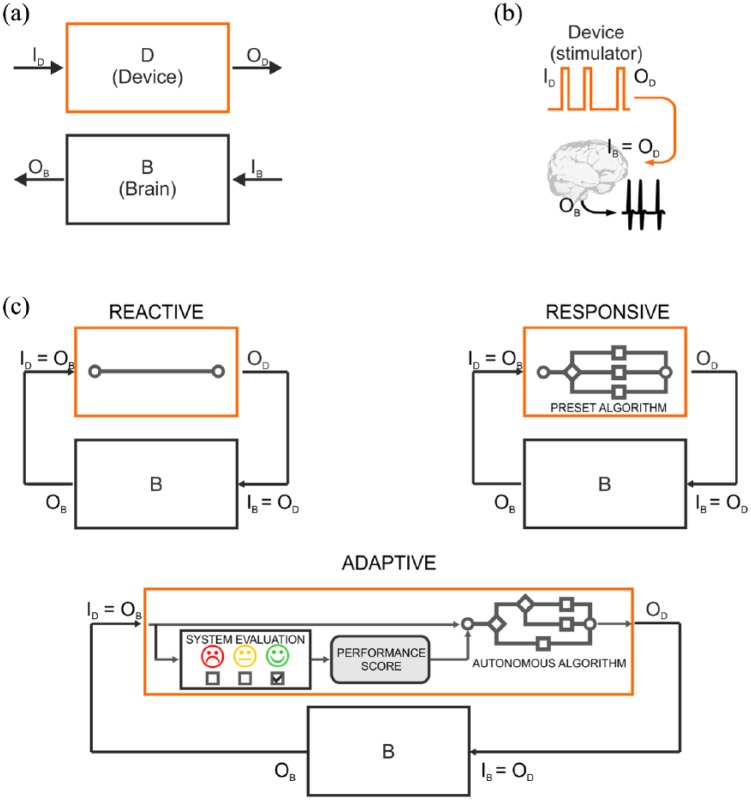Figure 2.
I/O control systems for neuroengineering. (a) Representation of the elements involved in a neurotechnological tool: an artificial device (D block) and a portion of the CNS (B block). (b) Open-loop architecture. The device is programmed to output a stimulus (device output – OD), which also represents the input to the brain (device input – ID); in turn, the brain generates an output response (brain output – OB). The open-loop device cannot read brain electrical activity (black trace) and thus operates independent of it. (c) Control algorithms for closed-loop architecture. In closed-loop fashion, the brain output response (OB) is fed back to the device, thus serving as an input to the device (brain input – IB) and determining the device output (OD). The reactive I/O system is capable of reading an input signal, but cannot interpret its meaning. The system’s output is predefined by the human, based on theoretical assumptions or on empirical trial-and-error refinement, and the feedback from the brain acts as a simple trigger. The responsive I/O system is provided with a number of choices, but their conditional application is predefined by the human based on previously acquired knowledge. The system interprets the feedback from the brain and selects the stimulus based on its content. The adaptive I/O system can independently choose the best output provided a varying input. The system learns the best output strategy through the feedback provided by the performance evaluator. In this way, the system may evolve and deliver a different output upon subsequent presentation of the same input based on the learned strategy and on its past experience.

